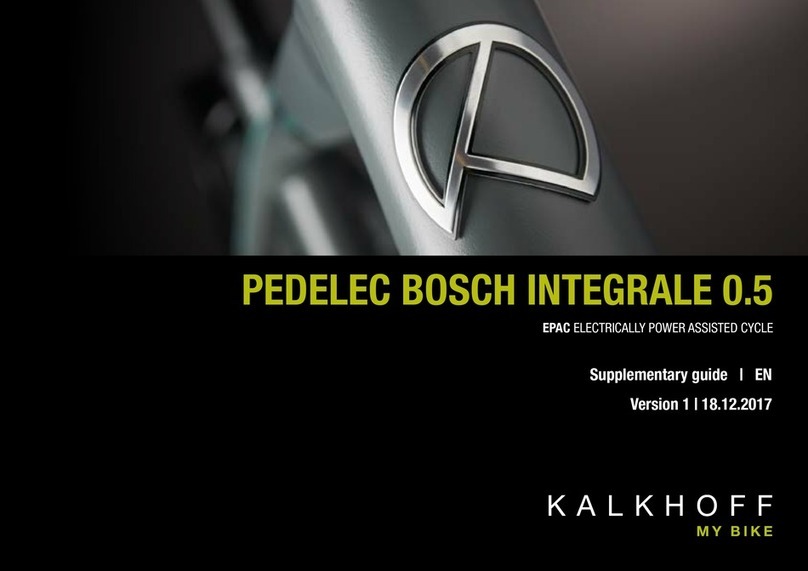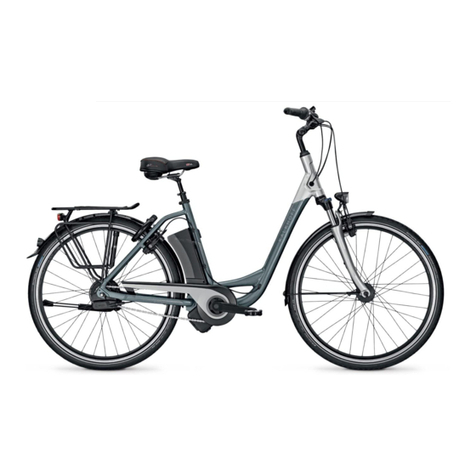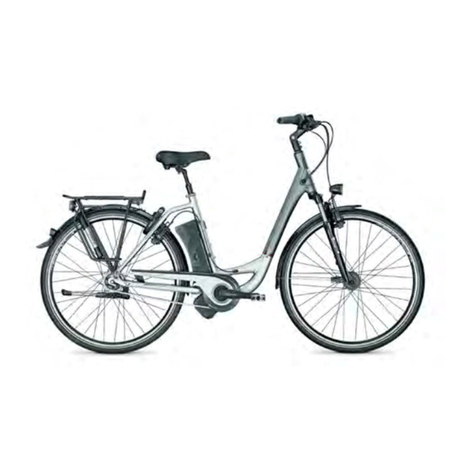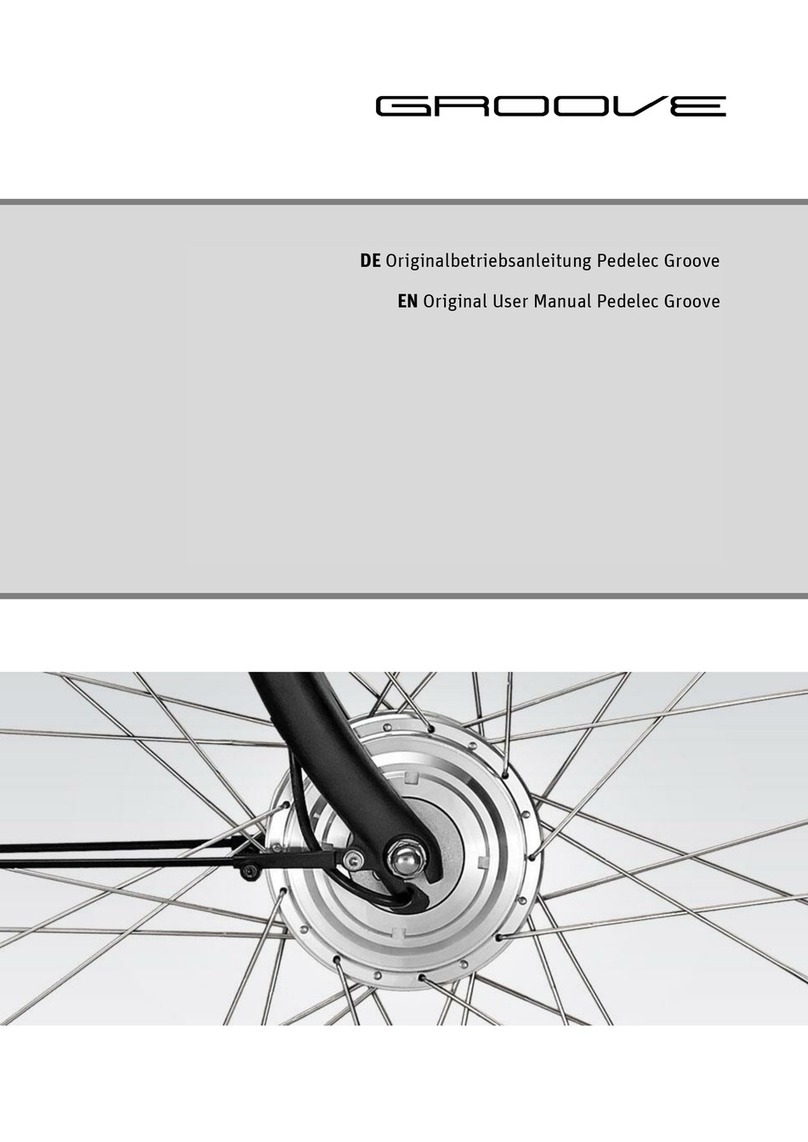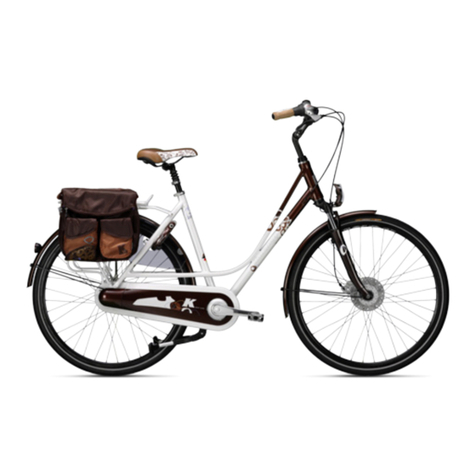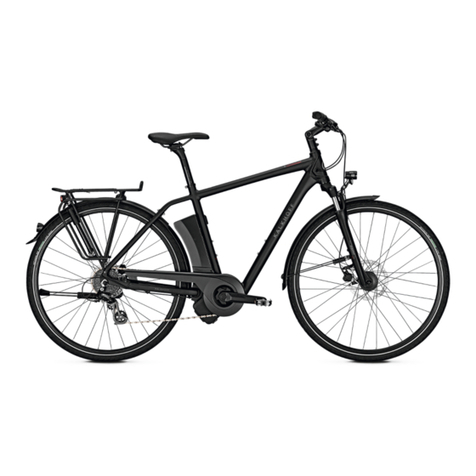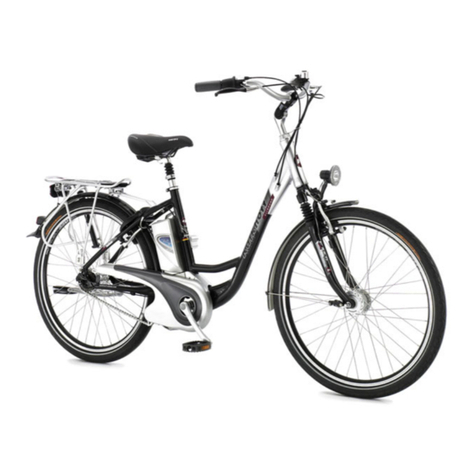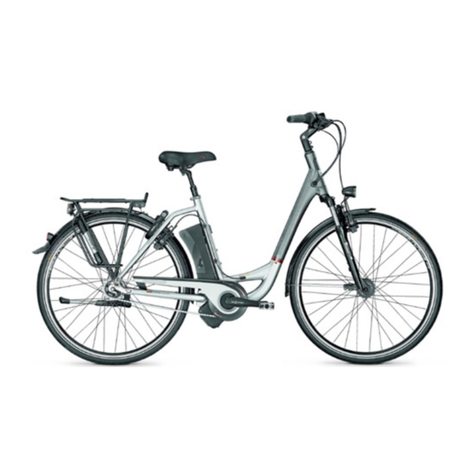Trekking bikes / ATBs
These bicycles may be used on public and made roads. They are also suitable for
light off-road use.
The manufacturer and dealer shall not be liable for any use of the bicycle which
goes beyond the intended use. This particularly applies to non-compliance with
safety advice and the resulting damage, for example due to:
●overload or
●improper repair of faults.
City, touring, sport, children’s and junior cycles
These bicycles may be used on public and made roads.
The manufacturer and dealer shall not be liable for any use of the bicycle which
goes beyond the intended use. This particularly applies to non-compliance with
safety advice and the resulting damage, for example due to:
●off-road use,
●overload or
●improper repair of faults.
Mountain bike (MTB)/Cross bike
These bicycles may be used off road. Do not use these bicycles to take part in
competitions. These bicycles may not be used on public roads. If you wish to use
your bike on a public road, you must comply with national regulations.
The manufacturer and dealer shall not be liable for any use of the bicycle which
goes beyond the intended use.
This particularly applies to non-compliance with safety advice and the resulting
damage, for example due to:
●use in competitions,
●overload,
●improper repair of faults,
●riding over steps,
●jumps,
●riding through deep water or
●extreme strain outside special MTB-courses.
5
Road traffic safety
●Always obey the valid traffic regulations.
●Never ride hands-free. This can lead to serious accidents.
●Remember that children under eight years of age must ride on the pavement.
Children aged eight to ten may ride on the pavement.
If children have to cross the road, they must dismount from the bicycle.
●When the road is wet, adjust your riding style accordingly.
Ride more slowly and brake earlier, as the braking distance will be
noticeably longer.
●Adjust your speed according to the terrain and your ability.
●Don’t listen to music via headphones whilst riding your bike.
●Don’t use a mobile telephone whilst riding your bike.
●If you ride off-road, use only official cycle paths.
●Always be ready to brake at blind corners and when riding downhill.
Appropriate use as intended
General
Bicycles are intended as a means of transport for single persons. The carrying of an
additional person on the bicycle is only permissible within the scope of national
regulations. If you wish to transport baggage, the bicycle must be suitably equipped
for this purpose. In this case, observe the loading limits for the carriers (see chapter
‘Permissible carrier load’, page 44).
Not every type of bicycle is suitable for every type of terrain. Bicycles are not designed
for extreme strains such as riding over steps or jumping.
The details given in this operating manual are valid for all types of bicycle.
Where details for individual types of bicycle differ, these are marked accordingly.
Observe the individual component manufacturers’ operating instructions, which are
supplied with your bicycle or are available online. If you still have questions after
reading the component manufacturers’ documentation, please consult your bicycle
dealer.
Appropriate use as intended also means complying with the usage, maintenance and
service conditions which are described in this operating manual.
The manufacturer and dealer shall not be liable for any use of the bicycle which goes
beyond the intended use.
english
françaisnederlands
español
